В пучине бренного мира. Японское искусство и его коллекционер Сергей Китаев - [65]
E-4
Iaponskaya graviura
(Japanese prints), the 2008 Pushkin Catalogue; volume 2 open. Photo by the author.
The “Pushkin Catalogue,” Iaponskaya graviura (Japanese prints), was published in 2008 in two thick tomes[205]. Unfortunately, it added scant visibility to this fabled collection inconnue. At the last moment, the Pushkin decided not to include English translations of the entries and introductory essay. The data in Latin letters are romanized names of the Japanese artists and the title and series of each print. I was only marginally successful in insisting on an alphabetical index of artists in Latin letters, to enable those users who do not read Cyrillic letters to find an artist listed alphabetically in a volume of over five hundred pages; Chikanobu (Тиканобу) and Hokusai (Хокусай), for example, come at the end of the Russian alphabet of thirty-three letters. After protracted persuasion, I seemed to have convinced the Pushkin bosses that a romanized index would be useful. The index was published – but without corresponding page numbers!
The incomplete roman index is a minor nuisance compared to the absence of the catalogue in bookstores and libraries. Brill publishers offered through me to distribute the catalogue outside Russia, a tender of no interest to the Pushkin authorities. There are copies in the library of the School of Oriental and African Studies, in the British Library, London, the library of the Metropolitan Museum of Art, New York, the Library of Congress, Washington, DC and the library of Waseda University, Tokyo. Two additional copies are those donated by me to the library of the Sainsbury Institute for the Study of Japanese Arts and Cultures, Norwich, UK, and to the Institute’s London office. The Pushkin Catalogue was printed in fifteen hundred copies; for roughly a month, it was available for sale for twenty-five hundred rubles (then one hundred dollars) in the Pushkin Museum bookstand. (I was lucky to have friends in Moscow who bought two copies and sent them to me – each set is about five kilos – over eleven pounds.) Since then, the catalogue is virtually unavailable, as it was never released to Russian bookstores.
The century-long story of the Kitaev Collection is, to borrow Churchill’s words, “a riddle wrapped in a mystery inside an enigma.” According to the Pushkin curator, Voronova, there are about two thousand prints currently in the roster. What happened to the tens of thousands proudly mentioned by the original collector? Why does this catalogue, called in the Pushkin “raisonné,” contain only 1546 entries, including insignificant prints in horrible condition, while dozens, if not hundreds, of decent works are left out?[206] (Sometimes the left sheet of a complete diptych is omitted, even though the right sheet is in the catalogue.) I made a start to unravel these contradictions. The fate of the Kitaev Collection is typical of what happens to a noble private initiative in Russia – be it under a czarist, Soviet or post-Soviet regime. Behind these vicissitudes remains the compelling story of Sergei Kitaev and his enchantment with Japanese art.
An “Encyclopedia of All the Arts of Japan”
In the late nineteenth century, when the young Sergei Kitaev began to buy Japanese art during his stopovers in Japanese ports (1885–86 and 1893–96), the collecting of ukiyo-e prints in the West was enjoying exponential growth. In Russia, however, he was virtually the first swallow of spring. (Regrettably, this swallow did “not a summer make” of Japanese art in his country.)[207] Kitaev can be included in the brilliant cohort of Russian collectors of his generation: well-educated and well-heeled representatives of the merchant class, who were more aesthetically open and daring than the nobility and gentry-class collectors, who traditionally gravitated toward European classical art. Kitaev looks like a representative man of his time and means, somewhat effete and in the sway of fashionable things Japanese. He was artistically gifted himself, being an amateur watercolor artist and a man with a refined and fragile nature. Not without reason, Kitaev chose as his “favorite” and “soul-mate” Tsukioka Yoshitoshi (1839–1892), the last important and innovative ukiyo-e master, who marked the end of the two-centuries-old cultural tradition[208]. An excessively overwrought – to the extent of the macabre and pathological – decadent who suffered from nervous breakdowns, Yoshitoshi died in his early fifties, as would Kitaev in his early sixties, after a series of ruinous outbreaks of psychic malaise.
Not much is known about Kitaev’s life: a dry list of the slowly changing ranks in his personnel file in the Navy archive; brief mentions of his collection in Russian and Japanese newspapers; a few short letters from Kitaev to various officials; and a letter of recollections by his fellow officer (and artist) Pavel Pavlinov (1881–1966), written forty years after their last meeting.
E-5
Tsukioka Yoshitoshi
The Spirit of a Virtuous Woman Sitting under a Waterfall (Seppu no rei taki ni kakaru zu), from the series “New Forms of Thirty-six Ghosts” (“Shinkei sanju-rokkaisen”). 1892. Ōban.
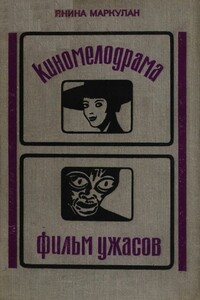
Настоящая книга Я. К. Маркулан, так же как и предыдущая ее книга «Зарубежный кинодетектив», посвящена ведущий жанрам буржуазного кинематографа. Киномелодрама и фильм ужасов наряду с детективом и полицейско-шпионским фильмом являются важнейшим оплотом буржуазной массовой культуры. Они собирают наибольшее количество зрителей, в них аккумулируются идеи, моды, нормы нравственности и модели поведения людей капиталистического мира. В поле внимания автора находится обширный материал кинематографа капиталистических стран, в том числе материал фильмов, не шедших в нашем прокате.
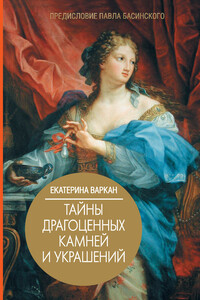
Изделия из драгоценных камней — не просто аксессуары, все они имеют особое значение в жизни своих обладателей. Изумительной красоты кольца, трости, камни, карманные часы, принадлежавшие царям и дворянам, императрицам и фавориткам, известным писателям, не только меняли судьбы хозяев, они творили саму историю! Перед Вами книга об уникальных шедеврах ювелиров и увлекательных историях вокруг знаменитых драгоценностей. Какие трости предпочитал Пушкин? Правда ли, что алмаз «Шах» стал платой за смерть Грибоедова? Что за кольцо подарил Лев Толстой своей жене Софье Андреевне? Какой подарок Александру I сделала Жозефина Богарне? Какова тайна бриллианта «Санси», и что за события связаны с жемчужиной «Перегрина»? На эти и другие вопросы отвечает автор в своей книге.
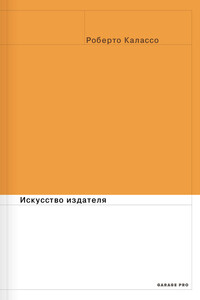
В книге Роберто Калассо (род. 1941), итальянского прозаика и переводчика, одного из зачинателей и многолетнего директора известного миланского издательства Adelphi, собраны эссе об издательском деле – особом искусстве, достигшем расцвета в XX веке, а ныне находящемся под угрозой исчезновения. Автор делится размышлениями о сущности и судьбе этого искусства, вспоминает о выдающихся издателях, с которыми ему довелось быть знакомым, рассказывает о пути своего издательства – одного из ярчайших в Европе последних пятидесяти лет.

"Ясным осенним днем двое отдыхавших на лесной поляне увидели человека. Он нес чемодан и сумку. Когда вышел из леса и зашагал в сторону села Кресты, был уже налегке. Двое пошли искать спрятанный клад. Под одним из деревьев заметили кусок полиэтиленовой пленки. Разгребли прошлогодние пожелтевшие листья и рыхлую землю и обнаружили… книги. Много книг.".
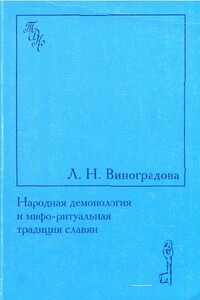
Книга посвящена «низшей» мифологии славян, т. е. народным поверьям о персонажах нечистой силы — русалках, ведьмах, домовых, о духе-любовнике и духах-прорицателях и т. п. Затрагиваются проблемы, связанные с трудностями идентификации демонологических персонажей и с разработкой методов сравнительного изучения демонологии разных славянских народов. При исследовании этого важнейшего фрагмента народной культуры главным для автора остается факт включенности мифологических персонажей во все сферы бытовой и обрядовой жизни традиционного общества.
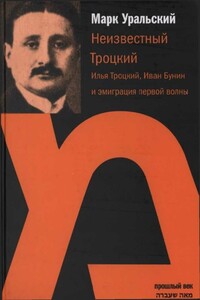
Марк Уральский — автор большого числа научно-публицистических работ и документальной прозы. Его новая книга посвящена истории жизни и литературно-общественной деятельности Ильи Марковича Троцкого (1879, Ромны — 1969, Нью-Йорк) — журналиста-«русскословца», затем эмигранта, активного деятеля ОРТ, чья личность в силу «политической неблагозвучности» фамилии долгое время оставалась в тени забвения. Между тем он является инициатором кампании за присуждение Ивану Бунину Нобелевской премии по литературе, автором многочисленных статей, представляющих сегодня ценнейшее собрание документов по истории Серебряного века и русской эмиграции «первой волны».